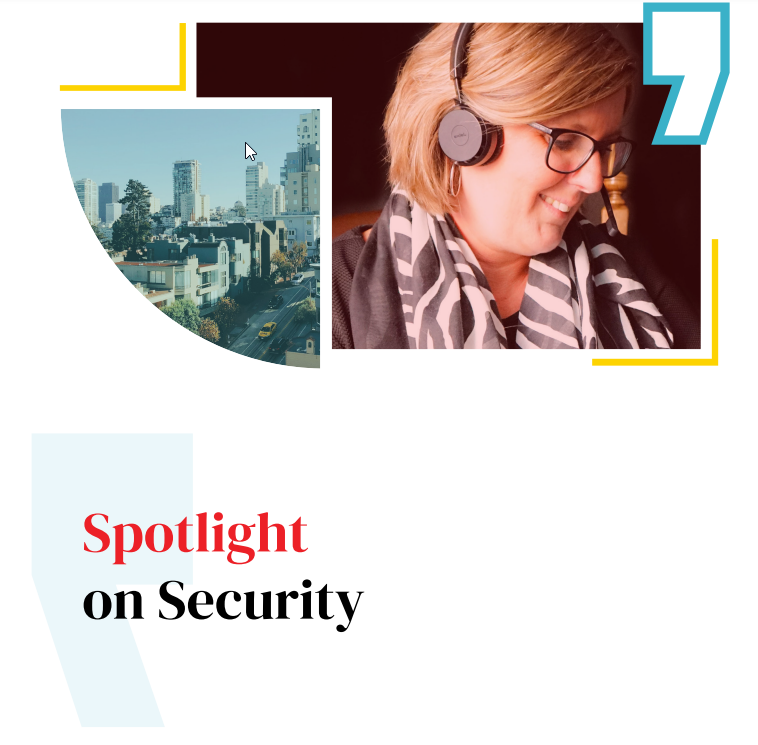In January 2020, Dora Wirth (Languages) Limited (DWL), attended our last face-to-face conference in Amsterdam, before the COVID-19 outbreak signaled an end to conferences, tradeshows and business networking as we know them but lead to Virtual Conferences.
Travel to the conference was easy, the accommodation convenient, and the chance to work and spend time in another European city (home to the recently relocated European Medicines Agency) was an attractive feature of attending the event.
The presentations were engaging, and the format of the roundtable discussions were immersive for delegates and exhibitors alike.
The networking opportunities during the conference were abundant, and we had a chance to catch up with existing customers. As exhibitors, we pitched our services to delegates who balanced paper coffee cups on plates of finger food, with our brochures stashed in their DWL branded tote-bags.
The ability to maintain eye contact and fish out a business card, mid-coffee, while vigorously shaking hands is surely the sign of a stalwart of the international conference circuit.
The conference offered benefits to delegates and exhibitors alike. For attendees, it was an educational opportunity, allowing them to exchange ideas with representatives from the European Life Science community. At the same time, exhibitors found it a valuable exercise in promotion and relationship building.
It’s a traditional format, and very familiar to most of us who use these events to seek out business opportunities.
Then came the COVID-19 outbreak and the ensuing lockdown.
Conference organisers planning to host events from March to May faced decisions on whether to make expensive adjustments or cancel altogether. Many were able to move these events online and enhanced their existing digital platforms with some form of video conferencing software.
As the year progressed into summer, the pandemic showed no signs of abating. As a result, many organisers worked towards creating better functioning online experiences to recreate the networking inherent to face-to-face conferences. Of course, this aspect is essential to finding and developing leads.
Some form of virtual platform is now the norm for most industry events, allowing delegates to interact with each other, watch presentations on Zoom and establish contact with show sponsors.
The question is, how do you make the most an online event as an exhibitor?
It was immediately obvious to exhibitors early in lockdown that the benefits of traditional face-to-face trade shows and symposia were missing.
The loss of direct eye-contact and other social cues create a digital barrier between attendees. Also apparent is the uncomfortable intensity of one-on-one conversations with relative strangers on Zoom, without the tradeshow atmosphere and ease of movement between other conversations happening around you.
While salespeople at exhibitions in 2019 had to catch the eye of busy delegates in the same manner one might try to catch the eye of a waiter in a restaurant, in 2020 exhibitors at virtual tradeshows need to take advantage of every feature available in order to strike up a conversation with attendees.
One thing is clear: sales efforts at events must be redoubled if we are to get a return on the high costs of exhibitor/sponsorship fees. Here are some tips to make the most of virtual conferences.
Contact in advance.
The more meetings you can arrange before the conference begins, the better. ‘Partnering’ was commonplace at many conferences before lockdown, but now that all conferences are virtual, delegates tend to split their attention between presentations and their rapidly filling email inboxes.
Therefore, if you can arrange to speak in advance, you have a better chance of keeping their attention and having good quality conversations around the rest of the agenda.
Increase visibility.
It’s essential, now that flashy exhibition booths are no longer possible, to enhance your virtual presence. If there is an opportunity to upload media to the online platform of any given event, you should do so. Video interviews, animations and PDFs are all ways to display your services in an engaging manner.
Speaking opportunities.
While exhibitors at tradeshows in the past would use their exhibition booth to show off their services in a visual format, on a virtual platform it is easy for delegates to overlook your profile on the list of exhibitors.
Taking a Speaker slot is a great way to step out of anonymity, and deliver an informative and persuasive pitch to a large number of delegates. These usually culminate in a Q&A session, allowing you to further engage with your audience and address them directly.
Data analysis.
Request data about visits to your company profile in order to measure the success of your promotional materials. This can help you understand what your potential customers are browsing and tweak content accordingly.
You could also direct delegates to ‘gated’ content on your website to gather leads which your team can follow up.
This method pre-qualifies the delegates who agree to exchange their details in order to view the content on your site.
Is there another way?
If we agree that this ‘new normal’ could last at least another year while we wait for safe and effective vaccines to become available, then we must accept that we will not be shaking hands and congregating with hundreds of people from around the world in enclosed settings for some time.
However, if we also agree that the existing online format for tradeshows and conferences does not bring us the ROI we are used to, then we must come up with innovative alternatives to fill up the top level of the sales funnel.
Innovation may come in the form of producing media (e.g. podcasts and video content) or creating associations or ‘accountability groups’ on LinkedIn. Alternatively, we may see certain aspects of conferences entirely ‘gated’, where in order to gain access to relevant information, delegates are required to submit qualifying information and contact details.
Time will tell whether we return to business as usual in the next year or so, and whether conferences continue to be a great opportunity to develop brand awareness and high quality leads.
For more posts on subjects ranging from clinical research to AI and current affairs, please check out our blog.








